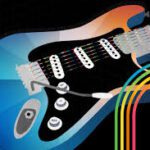Tailored learning experiences are more crucial than ever in this ever-evolving educational environment. The notion of customized education has become increasingly popular as teachers strive to meet the diverse requirements of their pupils. Know that tailoring lessons to individual preferences, styles, and paces not only enhances engagement but also boosts classroom efficiency. Instructors can take help from various creative and effective ideas to personalize learning for students. It will ensure that educators can better serve their students while fostering an environment of enriched education.
The Power of Personal Learning Paths:
The one-size-fits-all approach is falling short in catering to the unique learning journeys of each student. That is why to enhance classroom efficiency you need to consider implementing personal learning paths. These personalized learning paths allow students to progress at their own pace, focusing on areas they find challenging and bypassing content they have already mastered. The use of online learning platforms and adaptive software can make this idea more manageable, providing real-time insights into each student’s progress. Moreover, incorporating an attendance management system into the classroom can streamline the process of tracking and recording student attendance, allowing educators to allocate more time to personalized learning activities.
Customized Content Modules:
Flexibility in education is key. Teachers can empower students to explore their interests and passions within the curriculum by offering customized content modules. This approach not only enhances engagement but also helps students take ownership of their learning. Consider integrating project-based learning, where students select projects that align with their interests while still addressing the required learning outcomes. This empowers students and boosts classroom efficiency by making learning more meaningful and relevant.
Gamification for Engaging Learning:
Gamification is a creative approach that personalizes learning while adding an element of fun. By introducing game elements into the classroom, such as point systems, leaderboards, or interactive challenges, educators can cater to various learning styles and preferences. Gamification encourages healthy competition and rewards achievement, thus motivating students to actively participate and learn. It also provides instant feedback, which helps in identifying areas where individual students might need additional support.
Personalized Feedback Loops:
Regular and constructive feedback is essential for student growth. To personalize the learning experience, establish personalized feedback loops. One-on-one interactions with students to understand their goals and obstacles, as well as delivering written comments tailored to their unique requirements, are examples of these. Educators can build a more efficient and effective learning environment by addressing individual strengths and shortcomings. Students feel heard and empowered to make meaningful improvements in their learning journey.
Student-Created Learning Resources:
Encourage students to become co-creators of their learning resources. By allowing students to research and curate content related to their studies, they not only take an active role in their education but also help peers who may have similar learning preferences. Educational institutions can introduce a web based learning management system into the classroom. Using technological gadgets will greatly facilitate the implementation of personalized learning paths. Students can look for and exchange articles, films, or podcasts that interest them and are relevant to the subject. This not only makes learning more individualized but also promotes a classroom community.
Personalized learning is becoming a vital tool to promote classroom productivity and engagement. There is a dire need to implement modern resources and strategies as the educational landscape changes. By harnessing the power of personal learning paths, customized content modules, gamification, personalized feedback loops, and student-created resources, educators can provide more tailored and effective learning experiences. These innovative concepts foster a dynamic and adaptable learning environment while enabling students to take charge of their education. By using these techniques, teachers may provide their pupils the skills and information they need to thrive in a world that is changing all the time, leaving both parties feeling informed and educated.







